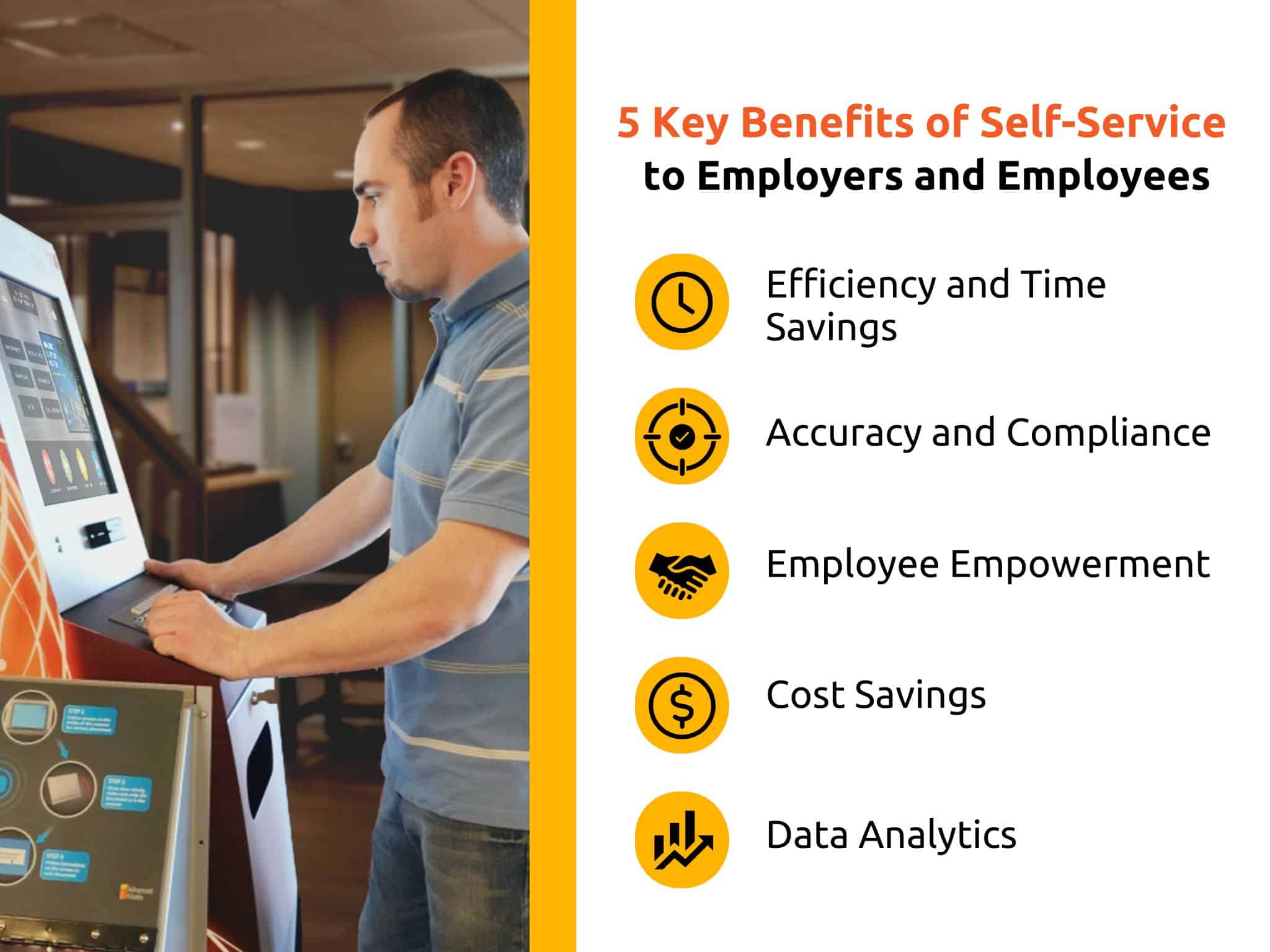The rapid evolution of human resources is driving a major shift in HR roles. Where HR professionals once focused on compliance management, benefits administration, paperwork processing, and recruitment, today’s landscape demands a more strategic approach. With Employee Self-Service (ESS) technology, HR teams can empower employees to manage many of their HR needs, allowing HR professionals to focus on higher-level tasks and drive organizational performance.
Why HR is Moving Toward Employee Self-Service Technology
Traditional HR functions are increasingly automated, reducing the need for hands-on management of everyday processes. ESS, a critical component of modern HR strategy, empowers employees to handle administrative tasks independently, such as benefits enrollment, time-off requests, and updating personal information. This shift is essential to maintaining an agile, productive HR department that adds value to the organization. ESS not only streamlines operations but also enhances compliance and reporting capabilities, saving time and reducing costs.
According to a recent Harvard Business Review article, “Increasingly squeezed managers are spending time they don’t have searching for new recruits in an expensive and competitive market. Unless efforts are refocused on retention, managers will be unable to drive performance and affect change.” ESS allows HR to refocus efforts on retention by simplifying routine processes.
What is Employee Self-Service (ESS)?
Employee Self-Service (ESS) portals are a feature in most modern HR information systems (HRIS) that give employees access to HR-related information directly through a company intranet or web portal. According to Gartner, ESS portals enable employees to:
- Update contact information
- Download pay stubs
- Request time off
- Enroll in benefits
By adopting ESS, organizations can reduce the administrative burden on HR while empowering employees with access to crucial information.
Key Benefits of Employee Self-Service in HR
1. Compliance and Reporting Made Easy
For HR departments, staying compliant with labor laws and regulatory changes is a continuous challenge. ESS helps manage compliance effectively by ensuring proper documentation and reporting. Forbes highlights that “HR compliance means ensuring your company policies and actions adhere to labor laws in your country, state, or municipality.”
With a streamlined HRIS and ESS, companies can maintain accurate records, adapt to changing tax codes, and ensure compliance with equal employment and health care regulations. ESS kiosks in distributed work locations make compliance effortless, allowing employees to submit documentation securely and instantly.
2. Simplified Benefits Management
Managing employee benefits is a time-consuming process, but ESS allows employees to enroll and manage their benefits directly through an online portal. Some of the major advantages include:
- Time Savings: Automated benefits enrollment cuts down on manual processing.
- Compliance: Built-in compliance features help meet federal and state regulations.
- Employee Empowerment: Employees can review and select benefits on their own time, improving satisfaction.
- Cost Efficiency: Reduced administrative labor and fewer errors lead to cost savings.
Research from The International Foundation of Employee Benefit Plans shows that companies implementing benefits technology see higher efficiency, improved engagement, and reduced compliance risk.
3. E-Learning and Employee Training
Employee training is an ongoing need, particularly in industries with stringent compliance standards. E-learning solutions within ESS offer flexibility, consistency, and convenience for training employees on new policies and best practices. Online training is also cost-effective; Corporate Finance Institute research notes that “online training can reduce expenses significantly compared to traditional methods.”
From compliance to professional development, e-learning modules accessed through ESS portals empower employees to learn at their own pace, enhancing engagement and knowledge retention.
4. Recruiting the Next Generation with Interactive Kiosks
ESS doesn’t just serve existing employees—it can also enhance the recruitment process. Interactive kiosks in public locations or company lobbies allow potential candidates to apply for positions easily, making it simple for HR to attract talent. Major companies like Target use in-store kiosks to streamline recruitment, demonstrating how digital self-service enhances both recruitment efficiency and applicant experience.
Leveraging Technology for a Strategic HR Advantage
Human Resources is evolving from a transactional to a strategic function. ESS technology, powered by HRIS systems and interactive kiosks, helps HR departments remain relevant by automating administrative tasks and freeing professionals to focus on KPIs like retention, engagement, and company culture.
With Advanced Kiosks’ solutions, HR departments can integrate ESS to manage compliance, streamline benefits, facilitate training, and enhance recruitment—ultimately driving both cost savings and productivity.









